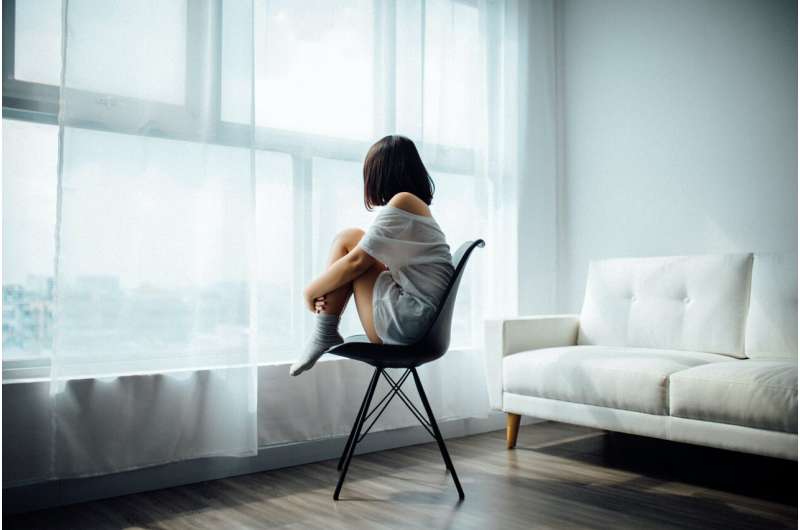When mental health crises require more than a phone conversation, these mobile units come to help

A grandmother calls a mental health crisis line for help after her grandson with intellectual disabilities and a history of mental illness attacked her.
The crisis can’t be resolved over the phone. A mobile crisis unit swings into action.
Crisis counselor Cedric McNear gathers paperwork and looks up the address. His colleague, Teralynn Turner, reaches out to the grandmother for more information. Along with two other mental health professionals, they rush into a white van.
Their mission is to diffuse a mental health crisis. They don’t have sirens or flashing lights. Unlike police, they don’t have handcuffs and guns.
“Come on, let’s go help some people,” McNear tells the team, every time, as they head out.
In July, a three-digit national mental health hotline launched to make it easier to get help in a mental health crisis. Eventually, it will replace a harder to remember 10-digit number known as the National Suicide Prevention Lifeline. The line, 988, has already seen an increase in use—including in Philadelphia—and most calls are resolved on the phone. But when a call needs an in-person response, a mobile crisis unit often responds.
Mental health advocates say that the success of the push to make 988 a one-call crisis solution depends on the ability to dispatch mental health and behavioral providers. The alternative is relying on police, which some fear will lead to escalation. About a quarter of people shot and killed by police in recent years were experiencing a mental health crisis.
Responding to the grandmother’s call on a recent summer day, the team in the white van turns off the radio for their quiet ride to a house in West Philadelphia. Turner gets her on the phone and learns that she isn’t injured, but sounds overwhelmed. Her grandson never attacked her previously.
The team does not want to draw attention to a family’s mental health issues. The van is unmarked, but they still park a block or two away. Team members do not wear uniforms, just name tags. They are carrying clipboards.
Inside the house, McNear and Turner first made sure that the grandmother didn’t need medical attention. The grandson was in a different room, talking about killing himself or others.
The team looks for clues of an imminent danger like having a weapon or a specific plan of action. They assess the threat as low. When they offer to take him to see a psychiatrist in the hospital, he agrees.
“He recognized that he needed help,” McNear said. “That was the most important thing.”
The grandson exits the house, walking down the steps and holding his grandfather’s arm. Both are smiling. There is no need for a police response. The grandfather thanks the team as his grandson puts on a mask and enters the van.
The team was dispatched from The Consortium, a non-profit behavioral health organization, and one of four working with the city to respond to calls that arrive through 988, or the Philadelphia Crisis Lines (215) 685-6440.
Those who work at The Consortium have painful memories of what can go wrong when police, and not trained mental health professionals, are the only option in such crises.
In October 2020, two Philadelphia police officer shot and killed Walter Wallace Jr, a 27-year-old who was in the midst of a mental health crisis. In the body camera footage from the incident, Wallace seems in a haze as he is pacing with a knife.
He was well known to The Consortium, living a few blocks away. He was treated there just a few days before.
“Our greatest disappointment was not getting the opportunity to help him,” said John White, the chief executive of The Consortium during a July a roundtable discussion with federal officials to launch 988.
City officials say that things are different nearly two years later, in part because they have ramped up the mobile response units. There are now four providers with multiple units, each focused on getting to know specific neighborhoods in the city.
“The teams get to know the communities,” said Jill Bowen, the commissioner of the Department of Behavioral Health and Intellectual disAbility Services.
The capacity is still not as robust as the city, or some activists, want it to be. But it is more robust than it was before the pandemic, when only one unit operated 24/7 in the city.
Responding in the community can lead to immediate sense of familiarity, one that in itself can help diffuse a tense situation. At least it did on that summer day.
On the way to the hospital, one of the counselors, Adriane Y. Parks, a trained psychologist, points out the window and says “you see this school right here? I went to this school.” A half block later, she points to the window on the other side of the car, “and this is my church.”
The patient in the backseat begins to laugh as team members tease each other over who went to the better school—and one confesses to having grown up all the way in North Philadelphia. He asks for some music, and the team obliges, even though usually they drive with the radio off.
“Fire and Desire” by Rick James and Teena Marie comes on the radio. The young man quizzes his counselors on who sings the song. The van fills with laughter again as McNear parks in front of the entrance to Penn Medicine at Cedar Avenue.
Not every call ends with laughter. Crisis workers are often faced with difficult dilemmas such as when to call police and coerce someone to go to treatment. It is a job that for many is personal. They got into crisis response because they themselves or someone they loved had struggled through mental illness or addiction.
“It’s giving back,” said Turner, a crisis intervention counselor who was part of the team involved in answering the grandmother’s call.
Back in the car, on the way back to The Consortium, she turns to her colleague, McNear, to debrief.
Source: Read Full Article
